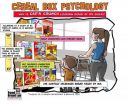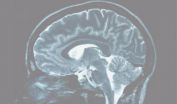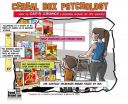(Press-News.org) PROVIDENCE, R.I. [Brown University] — Mindfulness is always personal and often spiritual, but the meditation experience does not have to be subjective. Advances in methodology are allowing researchers to integrate mindfulness experiences with brain imaging and neural signal data to form testable hypotheses about the science — and the reported mental health benefits — of the practice.
A team of Brown University researchers, led by junior Juan Santoyo, will present their research approach at 2:45 p.m on Saturday, April 5, 2014, at the 12th Annual International Scientific Conference of the Center for Mindfulness at the University of Massachusetts Medical School. Their methodology employs a structured coding of the reports meditators provide about their mental experiences. That can be rigorously correlated with quantitative neurophysiological measurements.
"In the neuroscience of mindfulness and meditation, one of the problems that we've had is not understanding the practices from the inside out," said co-presenter Catherine Kerr, assistant professor (research) of family medicine and director of translational neuroscience in Brown's Contemplative Studies Initiative. "What we've really needed are better mechanisms for generating testable hypotheses – clinically relevant and experience-relevant hypotheses."
Now researchers are gaining the tools to trace experiences described by meditators to specific activity in the brain.
"We're going to [discuss] how this is applicable as a general tool for the development of targeted mental health treatments," Santoyo said. "We can explore how certain experiences line up with certain patterns of brain activity. We know certain patterns of brain activity are associated with certain psychiatric disorders."
Structuring the spiritual
At the conference, the team will frame these broad implications with what might seem like a small distinction: whether meditators focus on their sensations of breathing in their nose or in their belly. The two meditation techniques hail from different East Asian traditions. Carefully coded experience data gathered by Santoyo, Kerr, and Harold Roth, professor of religious studies at Brown, show that the two techniques produced significantly different mental states in student meditators.
"We found that when students focused on the breath in the belly their descriptions of experience focused on attention to specific somatic areas and body sensations," the researchers wrote in their conference abstract. "When students described practice experiences related to a focus on the nose during meditation, they tended to describe a quality of mind, specifically how their attention 'felt' when they sensed it."
The ability to distill a rigorous distinction between the experiences came not only from randomly assigning meditating students to two groups – one focused on the nose and one focused on the belly – but also by employing two independent coders to perform standardized analyses of the journal entries the students made immediately after meditating.
This kind of structured coding of self-reported personal experience is called "grounded theory methodology." Santoyo's application of it to meditation allows for the formation of hypotheses.
For example, Kerr said, "Based on the predominantly somatic descriptions of mindfulness experience offered by the belly-focused group, we would expect there to be more ongoing, resting-state functional connectivity in this group across different parts of a large brain region called the insula that encodes visceral, somatic sensations and also provides a readout of the emotional aspects of so-called 'gut feelings'."
Unifying experience and the brain
The next step is to correlate the coded experiences data with data from the brain itself. A team of researchers led by Kathleen Garrison at Yale University, including Santoyo and Kerr, did just that in a paper in Frontiers in Human Neuroscience in August 2013. The team worked with deeply experienced meditators to correlate the mental states they described during mindfulness with simultaneous activity in the posterior cingulate cortex (PCC). They measured that with real-time functional magnetic resonance imaging.
They found that when meditators of several different traditions reported feelings of "effortless doing" and "undistracted awareness" during their meditation, their PCC showed little activity, but when they reported that they felt distracted and had to work at mindfulness, their PCC was significantly more active. Given the chance to observe real-time feedback on their PCC activity, some meditators were even able to control the levels of activity there.
"You can observe both of these phenomena together and discover how they are co-determining one another," Santoyo said. "Within 10 one-minute sessions they were able to develop certain strategies to evoke a certain experience and use it to drive the signal."
Toward therapies
A theme of the conference, and a key motivator in Santoyo and Kerr's research, is connecting such research to tangible medical benefits. Meditators have long espoused such benefits, but support from neuroscience and psychiatry has been considerably more recent.
In a February 2013 paper in Frontiers in Human Neuroscience, Kerr and colleagues proposed that much like the meditators could control activity in the PCC, mindfulness practitioners may gain enhanced control over sensory cortical alpha rhythms. Those brain waves help regulate how the brain processes and filters sensations, including pain, and memories such as depressive cognitions.
Santoyo, whose family emigrated from Colombia when he was a child, became inspired to investigate the potential of mindfulness to aid mental health beginning in high school. Growing up in Cambridge and Somerville, Mass., he observed the psychiatric difficulties of the area's homeless population. He also encountered them while working in food service at Cambridge hospital.
"In low-income communities you always see a lot of untreated mental health disorders," said Santoyo, who meditates regularly and helps to lead a mindfulness group at Brown. He is pursuing a degree in neuroscience and contemplative science. "The perspective of contemplative theory is that we learn about the mind by observing experience, not just to tickle our fancy but to learn how to heal the mind."
It's a long path, perhaps, but Santoyo and his collaborators are walking it with progress.
INFORMATION: END
Research method integrates meditation, science
2014-04-02
ELSE PRESS RELEASES FROM THIS DATE:
Infants are sensitive to pleasant touch
2014-04-02
Infants show unique physiological and behavioral responses to pleasant touch, which may help to cement the bonds between child and parent and promote early social and physiological development, according to research published in Psychological Science, a journal of the Association for Psychological Science.
Previous studies with adults have shown that when the skin is stroked, a specific type of touch receptor is activated in response to a particular stroking velocity, leading to the sensation of "pleasant" touch. Cognitive neuroscientist Merle Fairhurst of the Max Planck ...
Key chocolate ingredients could help prevent obesity, diabetes
2014-04-02
Improved thinking. Decreased appetite. Lowered blood pressure. The potential health benefits of dark chocolate keep piling up, and scientists are now homing in on what ingredients in chocolate might help prevent obesity, as well as type-2 diabetes. They found that one particular type of antioxidant in cocoa prevented laboratory mice from gaining excess weight and lowered their blood sugar levels. The report appears in ACS' Journal of Agricultural & Food Chemistry.
Andrew P. Neilson and colleagues explain that cocoa, the basic ingredient of chocolate, is one of the most ...
First peanut genome sequenced
2014-04-02
Athens, Ga. – The International Peanut Genome Initiative—a group of multinational crop geneticists who have been working in tandem for the last several years—has successfully sequenced the peanut's genome.
Scott Jackson, director of the University of Georgia Center for Applied Genetic Technologies in the College of Agricultural and Environmental Sciences, serves as chair of the International Peanut Genome Initiative, or IPGI.
The new peanut genome sequence will be available to researchers and plant breeders across the globe to aid in the breeding of more productive ...
'3D' test could reduce reliance on animals for testing asthma and allergy medications
2014-04-02
To determine whether new medicines are safe and effective for humans, researchers must first test them in animals, which is costly and time-consuming, as well as ethically challenging. In a study published in ACS' journal Molecular Pharmaceutics, scientists report that they've developed a simple, "3D" laboratory method to test asthma and allergy medications that mimics what happens in the body, which could help reduce the need for animal testing.
Amir Ghaemmaghami and colleagues note that respiratory conditions, such as asthma and allergies, are becoming more common. ...
World's oldest weather report could revise Bronze Age chronology
2014-04-02
An inscription on a 3,500-year-old stone block from Egypt may be one of the world's oldest weather reports—and could provide new evidence about the chronology of events in the ancient Middle East.
A new translation of a 40-line inscription on the 6-foot-tall calcite block called the Tempest Stela describes rain, darkness and "the sky being in storm without cessation, louder than the cries of the masses."
Two scholars at the University of Chicago's Oriental Institute believe the unusual weather patterns described on the slab were the result of a massive volcano explosion ...
JCI Online ahead of print table of contents for April 1, 2014
2014-04-02
NOS1 expression predicts melanoma-dependent immune dysfunction
Individuals with cancer often exhibit dysfunctional immune signaling in response to interferon (IFN) stimulation. Furthermore, recent evidence indicates that pSTAT-1 levels, which are indicative of IFN responsiveness, in circulating immune cells are predictive of clinical outcome in melanoma patients. In this issue of the Journal of Clinical Investigation, Qiuzhen Liu and colleagues at Southern Medical University, Guangzhou, China determined that melanoma cells have differing capacity to dampen IFN responses ...
Scientists eager to participate in public discourse on environment
2014-04-02
A survey of more than 500 researchers indicates that scientists have the desire to get more involved in public discussion and policy decisions regarding environmental issues, but have concerns about how their efforts might be perceived.
"Scientists debate whether they have a role in advocacy," says Gerald Singh, a PhD student in the Institute for Resources, Environment and Sustainability at UBC, who conducted the survey with his colleagues. "Some feel they need to remain objective and can't engage. Others feel they have a duty to get involved so that decisions are made ...
Eyes in the cereal aisle -- how Cap'n Crunch's gaze is influencing your purchasing
2014-04-02
Director of Cornell's Food and Brand Lab Brian Wansink and post-doctoral lab researcher Aner Tal, are releasing a new study today published in the Journal of Environment and Behavior that discovered consumers are 16 percent more likely to trust a brand of cereal when the characters on the boxes on the supermarket shelves look them straight in the eye. Not surprisingly, the study also found that the gaze of characters on children's cereal boxes is at a downward, 9.6-degree angle, while characters on adult cereal boxes look almost straight ahead.
Wansink says:
"If you ...
Positive, negative thinkers' brains revealed
2014-04-02
EAST LANSING, Mich. --- The ability to stay positive when times get tough -- and, conversely, of being negative -- may be hardwired in the brain, finds new research led by a Michigan State University psychologist.
The study, which appears in the Journal of Abnormal Psychology, is the first to provide biological evidence validating the idea that there are, in fact, positive and negative people in the world.
"It's the first time we've been able to find a brain marker that really distinguishes negative thinkers from positive thinkers," said Jason Moser, lead investigator ...
Cereal box psychology
2014-04-02
Silly rabbit, Trix are for kids! In a study of 65 cereals in 10 different grocery stores, Cornell researchers found that cereals marketed to kids are placed half as high on supermarket shelves as adult cereals—the average height for children's cereal boxes is 23 inches verses 48 inches for adult cereal. A second key finding from the same study is that the average angle of the gaze of cereal spokes-characters on cereal boxes marketed to kids is downward at a 9.6 degree angle whereas spokes-characters on adult cereal look almost straight ahead.
To examine the influence ...



